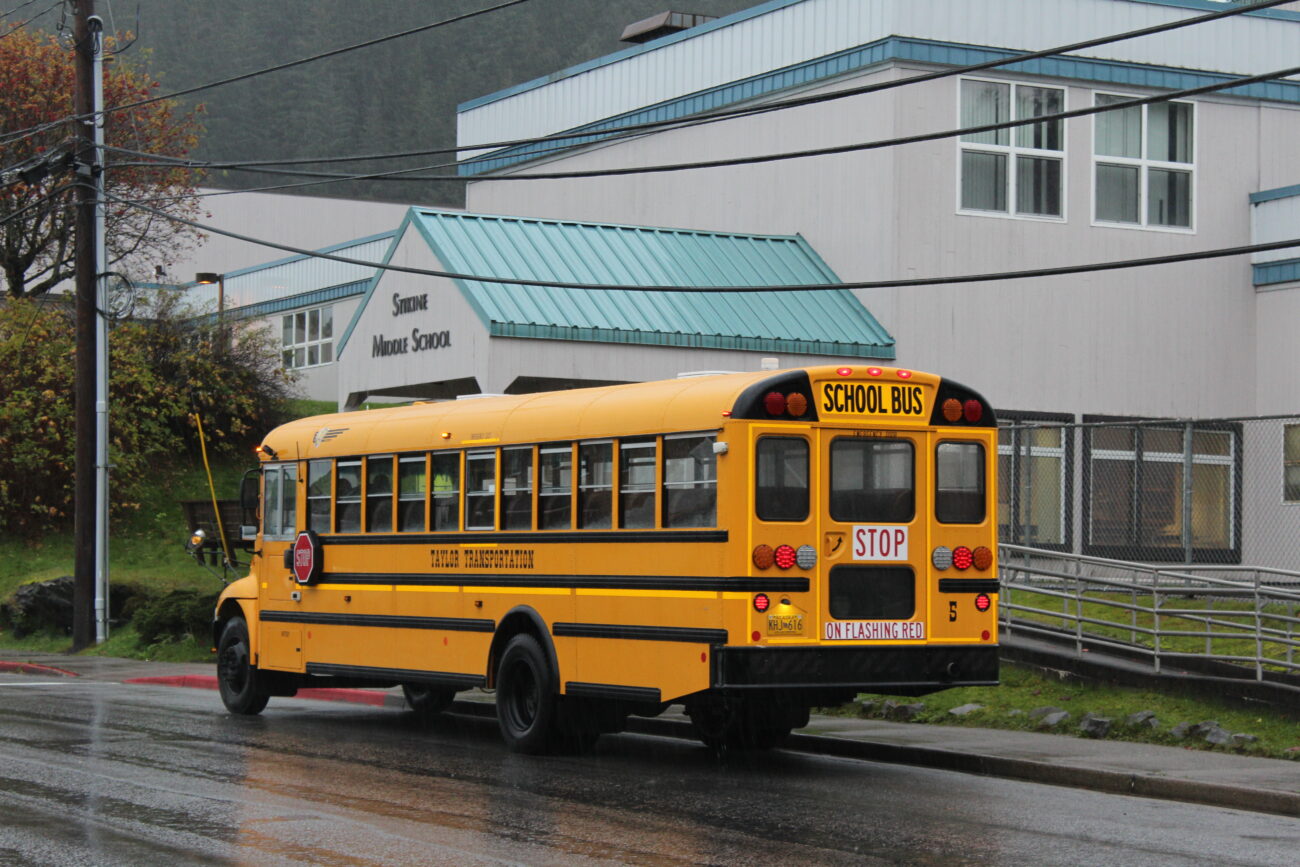
(Sage Smiley / KSTK)
Wrangell students could soon be riding around on the island’s first electric school bus. The community’s school district was selected to receive $395,000 from the federal Environmental Protection Agency to purchase a zero-emission vehicle.
The EPA has announced the recipients of $913 million in funding for school districts across the country to purchase electric or clean energy school buses. Wrangell Island’s public school district is the only district in Alaska selected for first-round funding.
Superintendent Bill Burr says the district applied for the federal program back in August. Wrangell’s schools contract with a local private company – Taylor Transportation – for bus service, but the district foots the gas bill.
“Since we have hydroelectric power, the cost would be less to run an electric bus than it would be for fuel,” Burr explains, “And the EPA is looking at clean emissions, that’s their main goal is to get as many polluted buses off the streets, connected to schools specifically.”
Two other Alaska school districts – Sitka School District and Valdez City School District – are both on the waitlist for EPA Clean Bus funding this year. Both districts applied for nine buses apiece.
Burr says Wrangell is more of an ideal location than some districts up north for an electric bus. The temperate islands of the Tongass don’t get to the sub-zero temperatures of communities on the road system or the Interior.
“We don’t suffer the really cold temperatures that make it harder for some school districts in Alaska to look at electric school buses,” Burr says, adding: “We [also] don’t have the range that many school districts have where the buses would be driving long distances.”
Wrangell is an island, so there’s only so much road to drive. Plus, there aren’t that many students – the whole district is served by two bus routes.
The electric bus is projected to cost $375,000. The rebate will also include up to $20,000 to install proper charging infrastructure. And part of the deal is that Taylor Transportation will need to get rid of a bus – the plan is to sell or dispose of one built in 2005.
Seattle-based EPA spokesperson Suzanne Skadowski says clean bus rebates aren’t new – the EPA has had a program under the 2005 Diesel Emissions Reduction Act.
“Diesel emission, and especially for kids, can be a really big problem,” she explains. “Kids are very vulnerable to air pollution and pollution in general, so this is just a really good way to protect kids.”
But, she adds, there’s more assistance available now, through the federal bipartisan infrastructure law passed earlier this year.
“What’s happening now is we’ve just got this big infusion of infrastructure dollars that are really going to help kind of supercharge this effort,” Skadowski says, “Because a lot of schools want the newer electric school buses, and they are very expensive, more so than the typical things in the past – People have just done retrofits, which are great, too, but I think most schools now are moving to try to get all-electric buses, which takes a bigger investment, which is part of the reason why we did this big infusion of funds into that [clean bus rebate] program.”
Superintendent Burr says he’s excited for Wrangell, but also about the prospect of more communities in Alaska getting assistance to green their bus fleets in the coming years. The infrastructure law sets out $5 billion for clean school buses over the next five years.
“We are hopeful that this is the beginning of a lot of school districts in Southeast being able to replace their school buses with clean fuel,” Burr says, reiterating the direct benefit to Wrangell’s school district: “This will help us in cutting down on fuel costs every time those buses are running.”
Skadowski echoes the hope for further bus replacements, saying the EPA wants more applications as well: “We really just want schools to apply. I think this infusion of funds is going to really help schools to feel like they can actually get those buses because, under the previous grant program, the grants really weren’t big enough to cover the full cost of an electric school bus. And now they will.”
In total, the EPA reports the initial round of funding this year will go to purchase 2,463 buses throughout all 50 states, Washington D.C., as well as several federally-recognized Tribes and U.S. Territories.
And the agency says that it plans to award $52 million more to other school districts throughout the country over the coming weeks.
In Wrangell, it’s not totally set when the new electric bus will make it to the island, but to get a rebate from the EPA, it’ll have to be purchased within six months.
Get in touch with KSTK at news@kstk.org or (907) 874-2345.












